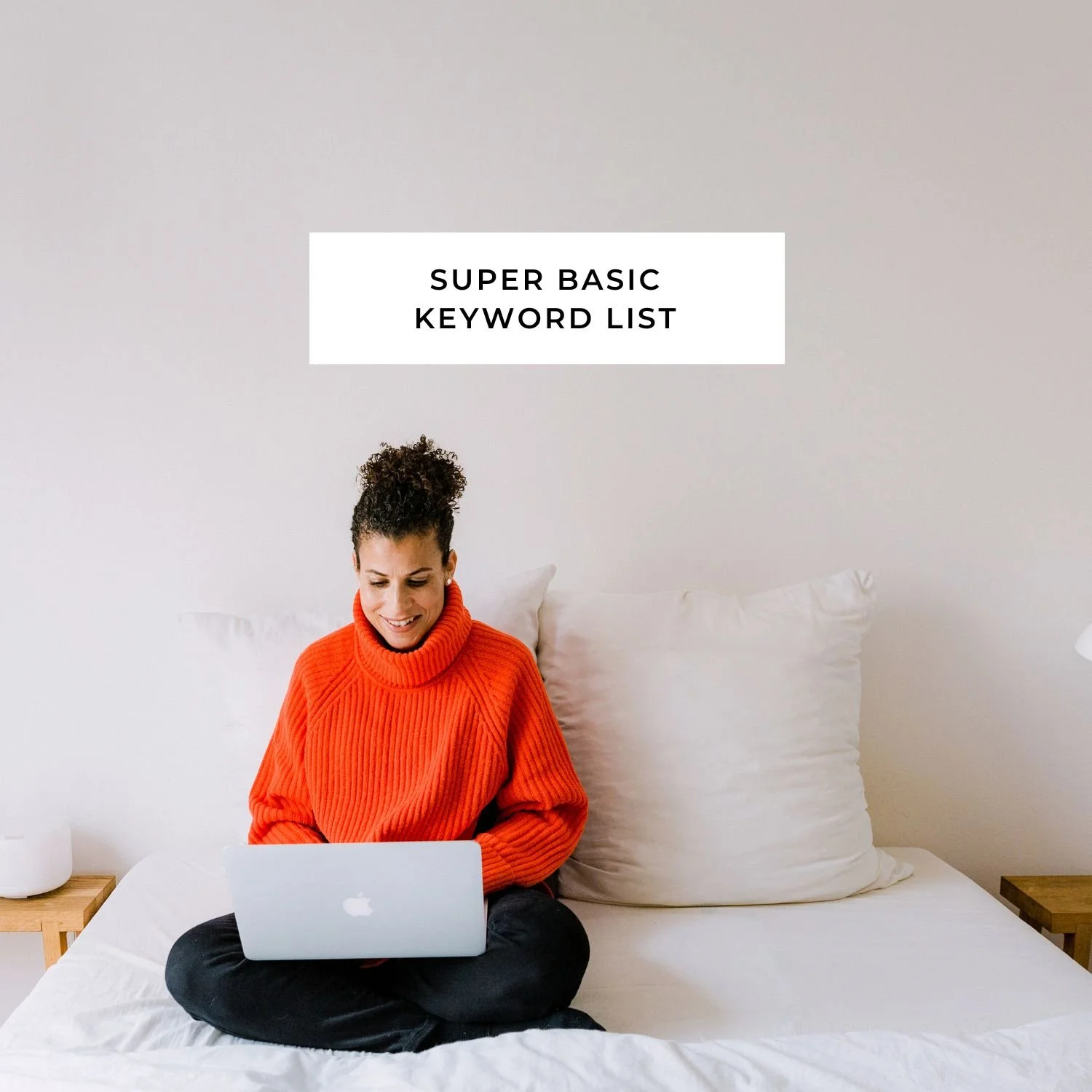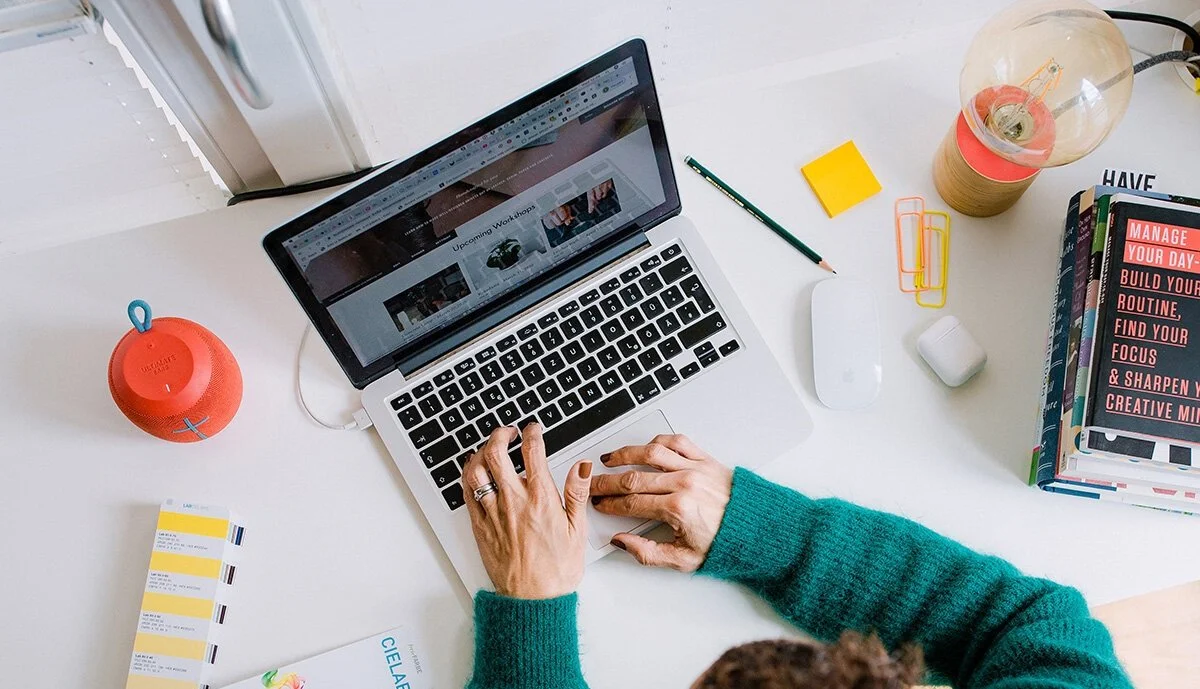10 Smart Questions To Ask Your Web Designer Before You Work Together
Asking your website designer how long your website project will take, what it will cost and when she can start may come pretty naturally, but there are some questions you might not know to ask. Here are the ones that will set you up for a successful website launch.
What do you need from me?
What about my domain name?
What about SEO
Does this website design package including branding?
Do I need special photography
Do you do copy or photo editing?
Can you help me with my email set-up/scheduling/commerce set-up
What about legal pages?
Can I update the website myself when we’re done?
Are there any additional costs?
I’m happy to report my projects run pretty smoothly these days. When I started, I found there were misunderstandings, mis-aligned expectations and confusion. Now I understand what needs to get clarified before website projects start.
The ten questions below are questions you can and should ask to make sure you and your web designer will be on the same page.
1. What do you need from me?
My Launch In A Day has a pre-launch workflow where I gather all the information I need from my clients before our launch day session. Unless you’re booking a add-on services like branding and copywriting, your web designer will probably at a minimum need the following:
Website text (‘copy’)
Images for your site
If you have them, visual branding elements (a logo, color palette, branding elements like illustrations)
2. What about my domain?
This is a boring subject, but an important one, so I’m going to break it down into a few sub- questions.
Do I need a Domain? Yes. Your domain is the your website address: www.yourwebsitename.com. We could launch your website with the free domain that Squarespace provides, but it will look like this: www.websitename.squarespace.com. A little tacky, and a kind of anti-climactic.
Where Should I buy a Domain? A domain is something you purchase from an internet service provider like GoDaddy or Squarespace. There are as many domain hosters as there are grains of sand on a beach.
Since I value speed, ease and efficiency, if a client has not already purchased a domain I have them purchase one through Squarespace because it’s a no-brainer to connect it to the website when we’re ready to launch.
The next best options are GoDaddy, Ionos or Strato. In my experience 90% of the time it is extremely easy to connect a domain to a Squarespace site with on of these providers (assuming it isn’t already associated with another website)
How do I connect my existing domain to my new Squarespace website? This is my least favourite thing to hear from clients, but it’s part of the deal. Often they’ve purchased a domain years ago. They’re not even sure of the name of the provider and they have to rummage around to find not only the name of the provider but their login information.
If it’s some internet service provider I’ve never heard of my stomach tightens.
Why? In order to connect the domain to my clients new website. Someone will have to log onto this rando domain internet service provider and do some technical stuff with their DNS.
In theory this isn’t complicated. It requires pasting a string of characters and some URLs into certain fields.
This process tells the domain provider ‘Hey, this domain should be used with this new Squarespace website’
The problem is, every service provider uses different values or assigns different names to the entry fields that tell the domain provider and Squarespace how to talk to one another.
Support can be non-existent or dodgy. I also don’t like poking around in clients internet service provider accounts because frankly, I don’t want to mess anything up.
In the end, it always works out, but it’s time consuming and frustrating to everyone. I offer this as a courtesy. It isn’t a part of the offer.
If I’m confronted with an internet service provider dashboard that I find very confusing, I have to toss the ball back into the clients court as I can’t be responsible for inadvertently altering the wrong settings in their account.
In this case the client will have to work directly with support from the domain provider to hook it up to the new website. Squarespace does have instructions on how to do this that they can share with support.
3. Do you do SEO?
I have written about SEO before and what a massive topic it is. As a web designer I will set your site up with some basic SEO best practices which Squarespace outlines here.
However SEO (Search Engine Optimization) and ranking well in Google is an internet marketing strategy that takes effort, consistency and time. Generative AI has made this even more complicated. In my view, SEO as a marketing strategy is highly dependent on the type of business you have.
The basic components are finding the right keywords you can use a keyword ranking tool like KeySearch*- which is the one I use, regular content creation, technical site optimization (mobile enabled, images that are not too big) and a backlink strategy.
You’ll be ahead of the game if you have a validated list of keywords and use them when you write your website copy. Lucky for you, I created an easy-to-follow workshop on exactly how to do this.
A live workshop and course created for everyday business owners who want to optimize their websites for search without information overload.
4. Does my website design project include branding?
Some website designers don’t include branding, some offer it as an add on. Others will partner with or refer you to another service provider who works on branding exclusively.
Branding typically involves these four components:
Some type of logo or word mark
Color palette
Typography
Imagery
Developing a comprehensive brand can be a very intense project that goes beyond just visuals. A branding expert can help you identify and articulate your brand values, your brand voice as well as your brand strategy.
I offer what I call a mini-brand add on with my one day website. I create a typography based word mark, a color palette, a series of corresponding images and typography suggestions. I provide a brand tear sheet and files of the word mark in all of the brand colors.
5. Do I need professional photography?
Professional photography *always* elevates the quality of a website. I highly recommend working with a photographer for a brand shoot.
Professional photography, while excellent to have, is not a requirement for a website launch. We can get you a great looking site with nothing but a high quality headshot.
My guess is most designers don’t require having professional photography in order to work together, they’ll probably just set expectations.
Fortunately there are also many great resources to find free or inexpensive stock photography for your website.
If you’re working with a photographer prior to our web design project, I can provide guidance on the type of shots to get.
I may also move some of the pre-work exercises around so that you’ll have your brand attributes and mood board ready to share with your photographer.
6. Do you do copy or photo editing?
Most web designers I know don’t work on website text or do photo corrections.
For example, if you have a photograph of yourself, but you don’t like how your hair looks and you want it to be ‘Photoshopped’ to look better, this is probably not something your web designer will take care of - but you never know, so best to ask up front to make sure there are no misaligned expectations going into your website design project.
When it comes to your website text (or ‘copy’) if there are typos, incomplete thoughts or grammar errors, that’s up to you to take care of. You can do this before or after your website launch (but obviously before is better!)
I like to think of it this way: as a web designer, I’m a cook. I take a bunch of ingredients: photography, colors, your brand attributes, layout, business goals, text and cook them up to make your website.
As the client, you provide the ingredients, your web designer doesn’t. He or she can guide you on how to get the best ingredients, but generally isn’t in the business of gathering them and perfecting them for you.
Of course, if you book my done-for-you Fast Fabulous and Finished website design package, with the exception of custom photography I do actually provide all of the ingredients.
FAST, FABULOUS & FINISHED
A complete professional website, including branding and text. After three short intake calls. Perfect for busy executives and consultants.
7. Can you help me with my email set-up/scheduling/commerce set-up?
I like to tell website clients that building your website is just the start. The next step is getting people to find it and then building an audience with your ideal customers, clients and partners.
One of the best ways to do build this relationship with your audience is by email marketing. This involves some set up on your website.
It’s pretty standard in most web design packages for your designer to embed or place an email sign-up on your website.
There are tasks for you however!
You’ll need to decide on what email marketing service you want to use. I use and recommend Squarespace Campaigns to most of my clients, but there are plenty of others out there.
You’ll also need to think through a welcome sequence (often called a nurture sequence) and a lead magnet. A lead magnet is a freebie to entice visitors to sign up for your mailing list.
Many web designers can set this process, called an automation, up for you but bill for it as an add-on service. Best to ask up front.
The same goes for any kind of scheduling or e-commerce set up. These are features that involve some complexity and go beyond the standard website design. Best to understand if this is part of the package your designer is offering.
8. Do I need legal pages?
Legal pages are absolutely necessary on your website. Data privacy is no joke and the laws or changing all the time.
I and most of the web designers I know are not lawyers! But we usually have some services we think are pretty good for generating your legal pages.
I can’t stress how important these are. In fact I have clients check a box relieving me of any liability if they decide not to include legal pages on their website.
I recommend Termageddon* for websites based in English speaking countries and Iubenda* for websites based in the EU and non-English speaking countries.
I have a more detailed post on legal pages and what you need to understand about them when launching your new site.
These questions may seem basic or obvious, but my guess is you're not launching websites all the time and this may even be your first time.
Getting answers from your web designer to these questions up front will bypass any headaches, awkwardness or difficult conversations from the start.
9. Can I update the website myself when we’re done?
Some web designers have a business model where they make a large percentage of their income on recurring revenue maintaining their clients websites.
These retainer models can include maintaining the website itself, for example updating plug-ins and hosting as well as supporting the website owner with changes or fixes to the site.
Other website designers (like myself!) aren’t interested in this model and prefer to have clients be self-sufficient after the website launch. I ensure this by using a hosted platform (Squarespace) that non-technical people find relatively easy to use.
I also create custom tutorial videos for my clients for the tasks they’ll most frequently perform on their websites.
I do offer clients packages to make enhancements (adding a blog, installing email, adding a commerce section, branding work) but these are time boxes in 90 minute, half-day and day long sessions.
It’s really a matter of preference and budget. If you never want to touch your website or even look at the back end, you may want to go with a designer who offers maintenance packages.
On the other hand, if you want the control of updating your own site, and don’t want to add to your monthly business costs, choose a web designer who confidently hands you the keys to your website and empowers you to manage it on your own.
10. Are there any additional costs?
Regardless of whether your web designer uses a hosted or non-hosted platform there will be additional costs. If using a non-hosted platform like WordPress you’ll need to pay monthly or annual hosting fees, and probably fees for plug-ins.
I use Squarespace and my clients need to purchase a subscription fee. Like many services there are fees for ‘extras’ like Squarespace’s email newsletter service, Scheduling tool, Translation feature, etc. You can have anything you want but, yes, there will be a fee.
Think about all of the features you want your website to have and ask if there are any fees associated. Better not to have any surprises on launch day.
*affiliate links








